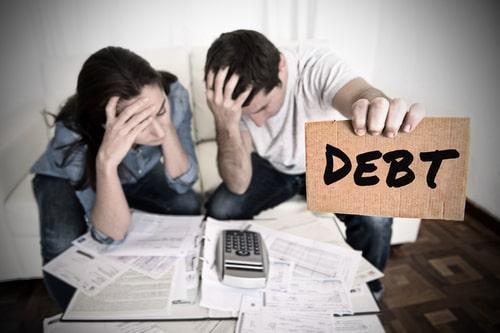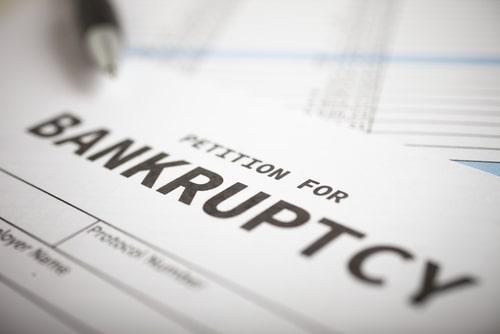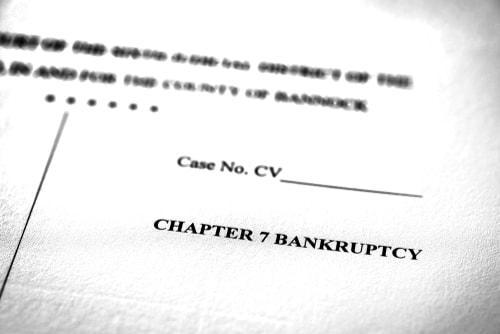Recent Blog Posts
What Debts Are Not Dischargeable in a Texas Bankruptcy?
 Filing for bankruptcy is often the last resort for many people. If you successfully file for bankruptcy and your debts are discharged, it can affect your current and future finances for years, which is why people do not typically get a bankruptcy unless they absolutely have to. For most forms of bankruptcy, receiving a discharge of your debts is typically the end goal. Most debts can be discharged or forgiven in a bankruptcy, but there are certain types of debts that either cannot be discharged or will not be discharged based on certain circumstances.
Filing for bankruptcy is often the last resort for many people. If you successfully file for bankruptcy and your debts are discharged, it can affect your current and future finances for years, which is why people do not typically get a bankruptcy unless they absolutely have to. For most forms of bankruptcy, receiving a discharge of your debts is typically the end goal. Most debts can be discharged or forgiven in a bankruptcy, but there are certain types of debts that either cannot be discharged or will not be discharged based on certain circumstances.
Student Loans
When it comes to student loan debt, it is almost never automatically discharged in a bankruptcy. If you are looking to have your student loans forgiven, you must prove to the court that making your student loan payments would cause you undue hardship. To do this, you have to prove that making your student loan payments would not allow you to maintain a minimal standard of living, you will likely be in a tight financial situation for the remainder of your student loan repayment period and you have made a decent number of payments in good faith on your loans.
Priority Debts in a Chapter 13 Case
Chapter 13 gives you some huge advantages over Chapter 7 for paying your priority debts. You’re protected while you pay what you can afford.
Priority Debts under No-Asset and Asset Chapter 7
Our last two blog posts described how Chapter 7 can sometimes be a sensible way of dealing with priority debts. (Those are ones you can’t “discharge”—legally write off, the most common being recent income taxes and child/spousal support.) Our blog post two weeks ago: a no-asset Chapter 7 case discharges all or most of your other debts. So then afterwards you can better afford to pay your priority ones. Last week: in an asset Chapter 7 case your bankruptcy trustee collects your unprotected asset(s). He or she then pays part or all of your priority debt out of the proceeds from selling those asset(s).
But Chapter 7 is not well-designed to deal with priority debts in many situations. Here are the main problems:
Priority Debts in an Asset Chapter 7 Case
Your Chapter 7 trustee may pay your priority debts—in full or in part—through the proceeds of the sale of your unprotected, not exempt assets.
Our last blog post was about what happens to priority debts in a no-asset Chapter 7 case. Most consumer “straight bankruptcy” Chapter 7 cases are no-asset ones. This means that the bankruptcy trustee does not take anything from the debtor because everything is protected, “exempt.” The trustee does not take and liquidate any assets, and has nothing—no assets—to distribute to the debtor’s creditors. That’s a no-asset Chapter 7 case.
No-Asset Case Even If Some Assets May Not Be Exempt
To understand how this actually works, sometimes a Chapter 7 case is a no-asset one even when not all assets are exempt. That’s because the bankruptcy trustee has some discretion about whether to collect and liquidate an otherwise unprotected asset. Here are three reasons why he or she may not pursue an asset:
FAQs About Chapter 7 and Chapter 13 Bankruptcy
 There is a multitude of reasons why a person can find themselves in debt. Credit card debt, student loan debt, mortgages and even medical debt are all common reasons why Americans owe money to lenders. In many cases, the amount of debt owed is proportional to a person’s income and they can make their monthly payments. In other cases, a person has so much debt that they are either constantly paying their bills late, not paying them in full or cannot pay their bills at all. In cases such as these, it is a good idea to look into the idea of bankruptcy. Though most people know what the basic idea is behind bankruptcy, many people still have questions about how it works, the process you go through and how it can help their situation. Here are some of the most commonly asked questions about bankruptcy.
There is a multitude of reasons why a person can find themselves in debt. Credit card debt, student loan debt, mortgages and even medical debt are all common reasons why Americans owe money to lenders. In many cases, the amount of debt owed is proportional to a person’s income and they can make their monthly payments. In other cases, a person has so much debt that they are either constantly paying their bills late, not paying them in full or cannot pay their bills at all. In cases such as these, it is a good idea to look into the idea of bankruptcy. Though most people know what the basic idea is behind bankruptcy, many people still have questions about how it works, the process you go through and how it can help their situation. Here are some of the most commonly asked questions about bankruptcy.
What Is the Difference Between Chapter 7 and a Chapter 13 Bankruptcy?
Priority Debts
One of the most important aspects of bankruptcy is that all debts are not equal. “Priority” debts are treated special in a number of ways.
Debts Are Different So the Law Recognizes Some Differences
The law does not treat all debts the same. That’s because you have different kinds of creditors that you owe for very different reasons. The law tries to be practical and so to some extent it respects these differences.
Your debts all fall into three categories:
- Secured
- General unsecured
- Priority
Today we start a series of blog posts covering priority debts.
Priority Debts
Priority debts are specific categories of debts that the law has decided should be treated as more important. Bankruptcy gives them higher priority, especially over “general unsecured” debts. Priority debts have power over you and over other debts in various ways.
Will Filing Chapter 7 Bankruptcy Stop a Foreclosure?
 If you are behind on your monthly mortgage payments and you have reached the point that your loan is in default, you could be facing a possible foreclosure on your home. You probably realize that if the bank forecloses on your loan, your home will be seized and sold, with the proceeds of the sale will go toward satisfying what you owe the bank. In the meantime, you might not have a place to live, and the foreclosure will leave a lasting mark on your credit.
If you are behind on your monthly mortgage payments and you have reached the point that your loan is in default, you could be facing a possible foreclosure on your home. You probably realize that if the bank forecloses on your loan, your home will be seized and sold, with the proceeds of the sale will go toward satisfying what you owe the bank. In the meantime, you might not have a place to live, and the foreclosure will leave a lasting mark on your credit.
Most people who are facing possible foreclosure often have a substantial amount of other debt in addition to their home loan. These obligations may include medical bills, credit card debt, and outstanding loans, such as personal loans and educational loans. As a result, it is not unusual for an individual in such a situation to consider filing for bankruptcy under Chapter 7 of the U.S. Bankruptcy Code. In certain cases, Chapter 7 bankruptcy might allow you to stop foreclosure proceedings, and a qualified bankruptcy attorney can help you understand your available options.
Nondischargeable Co-Signed Debts
Co-signed debts get tougher if your co-signer challenges the discharge of your obligation to him or her, or if the debt isn’t dischargeable.
Last week we discussed obligations on co-signed debts, both to the joint creditor and to your co-signer. In that discussion we assumed that both those obligations could be discharged (written off) in bankruptcy. But what if the co-signer challenges your ability to discharge the debt? And what if the underlying debt can’t be discharged, such as a recent income tax? We address these two situations today.
Co-Signer Challenging Discharge
If you file bankruptcy any creditor can challenge your ability to discharge a debt. But creditors’ grounds for successfully doing so are narrow, so such challenges are rather rare. The creditor essentially has to prove that you committed fraud in incurring the debt. You must have misrepresented your intentions at the time the obligation was created.
Concerns about Co-Signed Debts
If you have a co-signed debt, you have two separate sets of concerns. Those having to do with your common creditor, and those with co-debtor.
If you have a co-signed debt you tend to be more concerned about one of two sets of problems. You’re either mostly worried about the other co-signer, or about the creditor you’re both owe on the debt. It’s likely smart to be aware of both. Let’s start with concerns about the creditor.
Concerns about Your Joint Creditor
There’s a good chance you’re worried about the creditor you both owe because you’re having trouble paying the debt. This assumes that you are the one who is supposed to be paying the debt. The point of having a co-signer was to give you more incentive to pay the debt. The creditor has the right to make your co-signer pay the debt if you don’t. We’ll get into your options shortly.
When Should I Delay Filing for Bankruptcy?
 Declaring bankruptcy can get you out of a less-than-favorable financial situation when you are in need, but your circumstances will dictate which type of bankruptcy you are eligible for and how much the bankruptcy will help you. Once you have figured out that you want to file for bankruptcy, you must then determine when your most opportune time to file is. In certain situations, you may want to delay filing for bankruptcy. Delaying your bankruptcy can sometimes allow you to keep more of your money, protect a friend or family member’s money or even increase your chances of qualifying for a Chapter 7 bankruptcy. Here are a few situations in which you may want to consider delaying filing for bankruptcy.
Declaring bankruptcy can get you out of a less-than-favorable financial situation when you are in need, but your circumstances will dictate which type of bankruptcy you are eligible for and how much the bankruptcy will help you. Once you have figured out that you want to file for bankruptcy, you must then determine when your most opportune time to file is. In certain situations, you may want to delay filing for bankruptcy. Delaying your bankruptcy can sometimes allow you to keep more of your money, protect a friend or family member’s money or even increase your chances of qualifying for a Chapter 7 bankruptcy. Here are a few situations in which you may want to consider delaying filing for bankruptcy.
You Paid Money Owed to a Family Member Too Close to Filing
If you pay certain creditors $600 or more prior to receiving a discharge, your bankruptcy trustee could demand the money back from the creditor. This is called a preference because you have put that creditor in a better position than your other creditors. The preference period for most creditors is 90 days prior to filing for bankruptcy. For “insiders,” such as friends or family members, the preference period is one year prior to filing for bankruptcy.
Additional Charges and Curing Your Mortgage Arrearage
Resolve disputes with your lender in Chapter 13 about 1) additional fees and charges, and 2) whether you’ve cured the mortgage arrearage.
Last week we described a Chapter 13 procedure to force mortgage lenders to resolve mortgage accounting disputes. This procedure focuses on changes to the monthly mortgage payment amount during the case. These are often just the normal contractually mandated changes arising from adjustments to the mortgage interest rate, and in property taxes and homeowners’ insurance. You and your lender need to be on the same page on the monthly amount so that you can stay current. Because of the importance of this, Rule 3002.1 of the Federal Rules of Bankruptcy Procedure provides an enforceable way within Chapter 13 for you to timely learn about mortgage payment changes and to efficiently resolve any related disputes.
This Rule also addresses two other practical problems about mortgage accounting:






